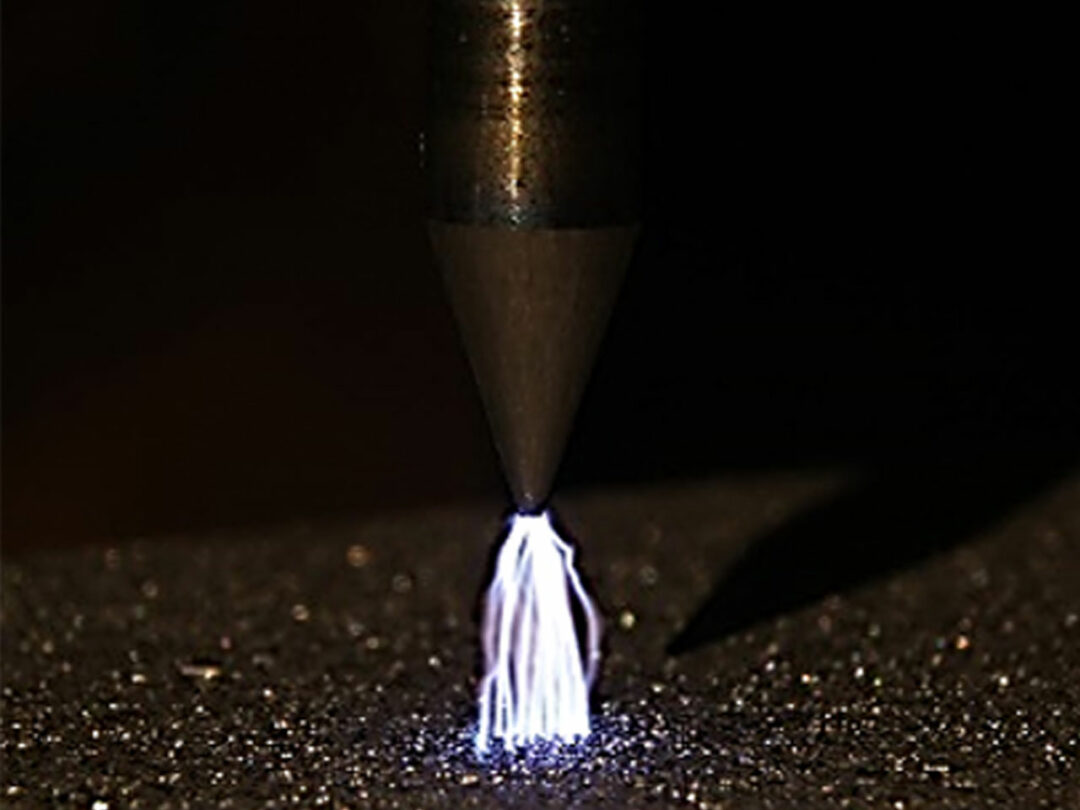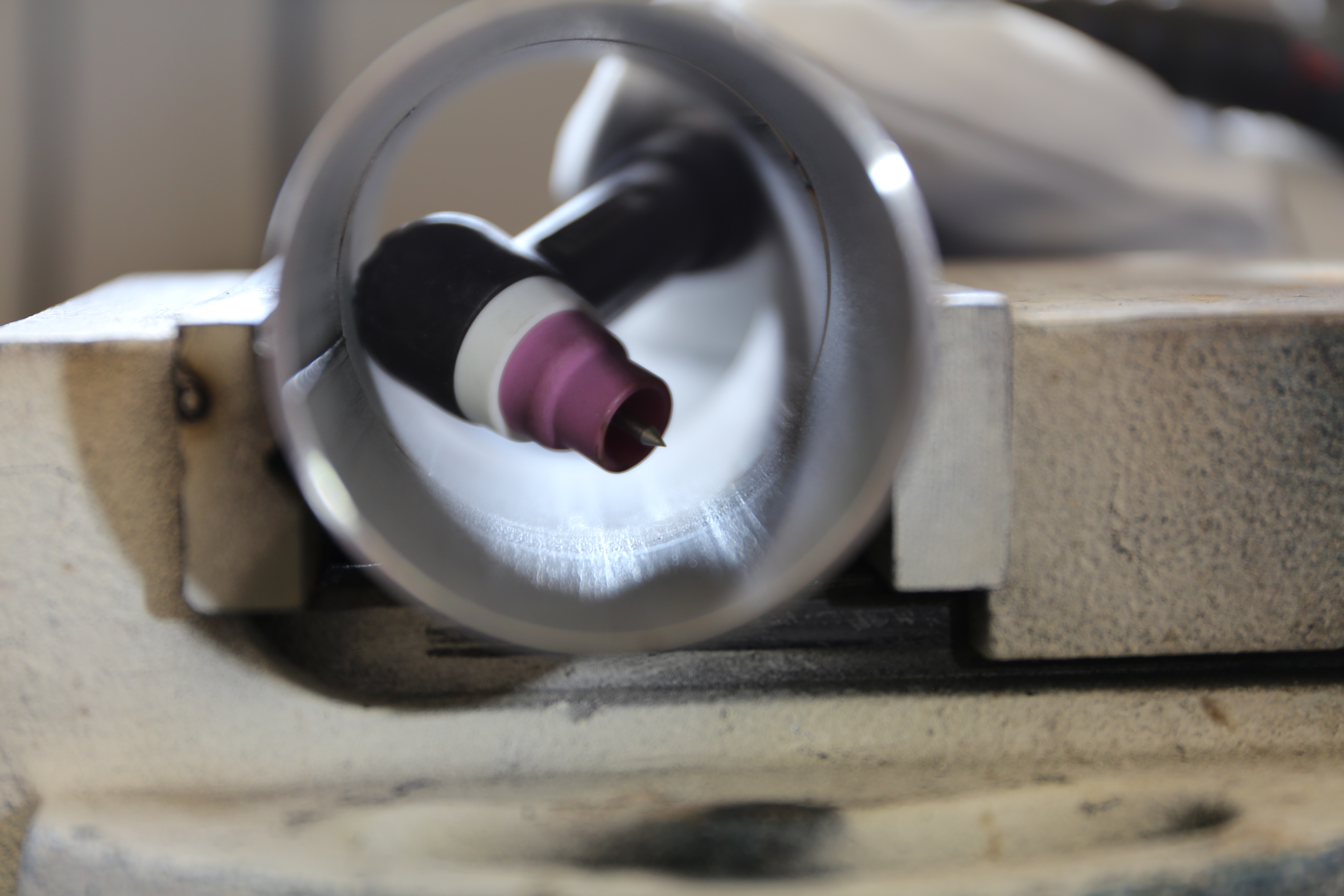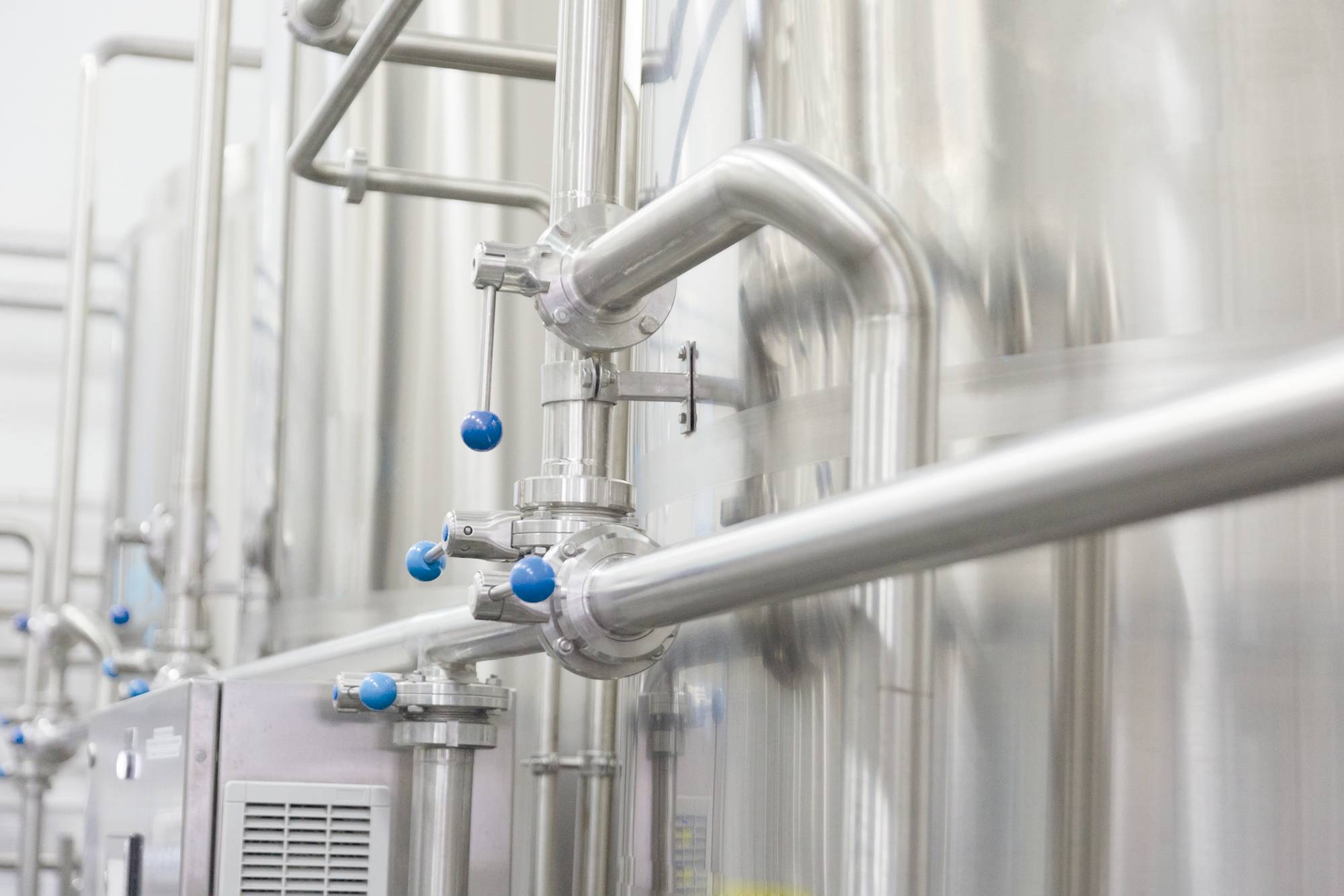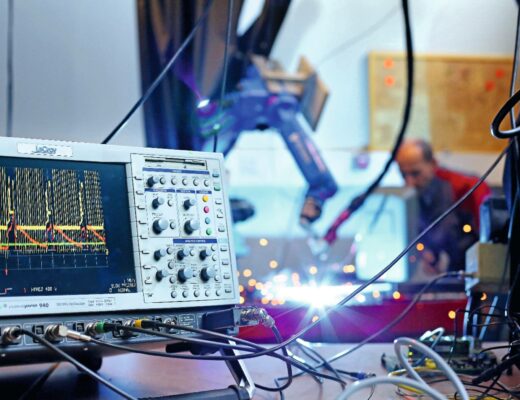Driving on ice: assuming you have at least four wheels and have undergone intensive training, this should be possible. However, if the driver wishes to drive on mountain slopes with high precision and maximum safety, a vehicle with all-wheel drive is advisable – almost as a basic requirement. There are also parallels with TIG welding here.
The maximum quality welding process which demands fine dexterity is also suitable for domestic use with simple touchdown ignition. However, for anyone wanting to enter the professional field with the purest seam quality, a TIG welding system with HF ignition (high frequency) is indispensable.
What is touchdown ignition?
In order to convey the necessity of HF ignition during TIG welding, traditional touchdown ignition – also known as Scratch Start or lift arc ignition – must first be examined and its function understood. One fundamental fact is true for all ignition variants: every time ignition takes place, this is bad for the tungsten electrode, as each ignition process leads to wear of the precious tungsten.
Touchdown ignition further accelerates this wear. When the tungsten electrode touches the parent material, a short circuit is established. A short circuit causes the electrode tip and parent material to heat up, meaning that both begin to evaporate. This is also called thermal ionization. A piece of the electrode tip can also be burnt off during ignition, which – after lifting the electrode – remains in the weld metal (parent material).
Advantages of touchdown ignition
- The principle of touchdown ignition is based on the short circuit. It therefore almost always works
- Affordable TIG welding: With the simple principle of touchdown ignition, it is possible to use an MMA or MIG/MAG system for TIG welding. To do so, the welding torch simply needs to be replaced
Disadvantages of touchdown ignition
- Rework: Tungsten inclusions in the parent material act as an error source, similar to a notch. For high-quality TIG weld seams, this inclusion must be ground away
- After welding the electrode is extremely hot; it glows like a filament in a bulb, and cooling down takes some time. Frequent ignitions one after the other are therefore not possible: In this situation, there is a high risk of the electrode remaining “stuck” when ignition takes place again
Support for touchdown ignition
SoftStart: Professional power sources offer an optimized touchdown ignition process, also known as SoftStart or Lift-Start. The power source detects the short circuit when the tungsten electrode touches the workpiece and only a small amount of current flows – much less than the set welding current. When the electrode is lifted, the device detects that the voltage is increasing and the current is gradually ramped up to the set welding current, thereby minimizing the risk of the electrode burning off.
4-step welding torch: The TIG welding torches used can also provide a great deal of support. In 4-step mode, the torch trigger is first held in the pulled position. After lifting the electrode, only a “search arc” is produced at minimum power, which barely melts the surface, let alone generates penetration. With the torch trigger held down, the perfect position for the welding torch can be searched for with ease.
Once the welder has found the optimum position for the welding torch, they can release the trigger and the welding process can begin at the preset amperage. Weld seam errors due to improper arc alignment at the start of welding are this minimized, despite touchdown ignition.
Touchdown ignition using SoftStart may be a good option for upgrading an existing MIG/MAG or MMA welding system. As a result, reliable TIG welding work can also be carried out.
What is HF ignition?
To rule out any inclusions in the parent material and ensure ultra-pure seam quality, high frequency (HF) high voltage (HV) ignition has been developed; usually known simply as HF ignition. In terms of quality, HF ignition is simply the best – weld seams do not get any better than this. Touchless, short circuit-free ignition of the TIG arc is only possible using this function.
The tungsten electrode is positioned roughly two millimeters above the desired welding start position. When the torch trigger is pressed, the contact-gap between the parent material and electrode tip is ionized through high voltage at roughly 11 kV. The arc can therefore ignite precisely at the desired point.
An HF spool is required to do this, which generates the necessary energy. However, as an HF module requires a lot of space and an expensive technical upgrade to the welding system, until now this technology has only been available on specific TIG devices.
Advantages of HF ignition
- Allows for maximum weld seam quality in TIG applications: Ultra-pure seams free of inclusions are a possible result.
- The welding torch can be positioned perfectly. The welding start can therefore be controlled perfectly.
- Immediate re-ignition is possible at any time despite the hot electrode, as contact with the parent material does not occur
- Hardly any wear: Touchless ignition means an extremely low level of wear on the tungsten electrode.
Disadvantages of HF ignition
- The high voltage flows off via the earth (ground). It may therefore be capacitively discharged again via the hosepack. In practice, this means that a high voltage is no longer present at the front of the needle. The longer the hosepack on the ground, the poorer the HF ignition properties. The more of the hosepack that is raised in the air, the better the ignition properties
- In practice, this means that a high voltage is no longer present at the front of the needle. The longer the hosepack on the ground, the poorer the HF ignition properties. The more of the hosepack that is raised in the air, the better the ignition properties
- During mechanized TIG welding in particular, voltage loss is an issue: Sometimes hosepacks are used that are over 20 meters long – and these must be considered in the planning
- Safety risk due to high voltage: People with heart pacemakers should not use HF ignition. The use of HF ignition must also be avoided in the case of sensitive electronic parts, otherwise serious damage may occur.
Touch HF
… is a variant of TIG HF ignition. The principle here is also based on high voltage, which ionizes the contact-gap. Nevertheless, the tungsten electrode touches the workpiece prior to this. However, after lifting the welding torch, the arc only ignites after a preset pause time.
Advantages
- After lifting, the welding torch can be brought into the perfect welding position – before the arc starts to burn. As no torch trigger has to be pressed at the start of welding, “shaking” or other position changes do not occur
- Extremely precise ignition of the TIG arc: When the needle tip makes contact, the parent material is slightly roughened. This minimal change in the surface is already sufficient for the arc to ignite precisely at the desired point: a huge advantage for extremely fine welding operations where precision ignition is a requirement.
- It is even possible for ignition to take place on the filler material already deposited
- Extremely low heat input possible: Following accurate ignition, the process can be paused again immediately, allowing the heat input to be minimized
- Welding torch can be used professionally without torch trigger: In the case of difficult to reach components, e.g., when welding thin pipes, a trigger-less welding torch can be used. Accessibility is thus improved. Welding is still started extremely professionally
Highly professional TIG welding using HF ignition
Simple touchdown ignition is hardly used anymore in the professional field; almost everything is produced using HF ignition. Where even finer seams or problematic component accessibility is concerned, such as for extremely narrow pipes, Touch HF is used.
With the MagicWave or TransTig series, Fronius has a range of TIG welding systems that possess numerous highly professional ignition properties.
 Perfect Welding Blog
Perfect Welding Blog




4 Comments
Juan Carlos Estrada
30. May 2021 at 10:35Gracias por los avances que hacéis, facilitáis mucho nuestro trabajo, gracias
redakteur
1. June 2021 at 7:19Thank you for your comment! De nada y muchas gracias!
Ben Josh
31. March 2022 at 16:39Very well explained HF ignition and I firmly believe that the writer is well versed in his niche. Good wrok!
redakteur
4. May 2022 at 14:14Thank you very much for your nice feedback!